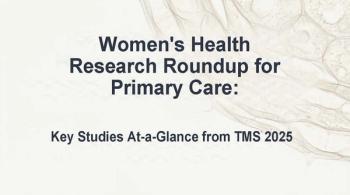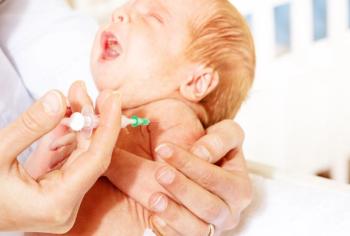
Mpox Outbreak: 5 Things to Know if Patients Ask
Now that the WHO has declared a second mpox global emergency, you may want to brush up on knowledge of the disease and the 2024 outbreak.
The first record of mpox dates back to the late 1950s.1 Its discovery came following 2 outbreaks of a poxlike illness that spread throughout monkey colonies being observed for research purposes. Human infection was first reported in 1970 and occurred in what is now the Democratic Republic of the Congo (DRC), cementing mpox as a zoonotic disease, indicating its capabilities of transmitting from animals to humans. Mpox has been found in mammals such as monkeys and small rodents and is thought to originate in parts of West and Central Africa. Up until 2022, mpox cases were considered rare and were typically attributed to travel to or from regions where the virus is endemic, or otherwise the importation of infected animals.1
In
“Mpox, originating in Africa, was neglected there, and later caused a global outbreak in 2022. It is time to act decisively to prevent history from repeating itself,” Dimie Ogoina, MBBS, FWACP, FMCP, Niger Delta University Teaching Hospital, stated in the WHO’s recent proclamation.2
5 Things to Know About the Current Mpox Outbreak
1. What Is Mpox and How to Spot It
Mpox is a viral infection that first manifests in a rash.4 The virus has an incubation period for at least 3 days, but it is possible to remain asymptomatic for up to 3 weeks post exposure. At first, the rash presents as blisters, sores, or appears pimple-like. These manifestations often cause itchiness or pain and will undergo multiple stages as they scab over and heal.4
The CDC provides an adequate
Individual symptoms vary in severity. The rash commonly lasts for 2 to 4 weeks, affecting areas such as one’s hands and feet, face, or groin, as well as the genital and anal regions.6 The WHO notes that lesions can present in the mouth, throat, eye, vagina, penis, anus, and rectum. During this time, or perhaps afterwards, individuals can experience additional symptoms including muscle aches, back pain, headache, fever, swollen lymph nodes, and lethargy. Someone may only experience a single sore while others endure thousands, and associated inflammation—depending on the affected area—can contribute to painful bowel movements or urination.6
2. How the 2024 Outbreak Compares to 2022
There are two strains of mpox: clade I and clade II. Clade II is endemic to West Africa and is responsible for the global outbreak of 2022.1 Mpox infections from the clade II type are notably less intense than infections contracted from the clade I type. The survival rate in these cases exceeds 99.9%.
The current outbreak is tied to the spread of clade I mpox, a more dangerous and transmissible form of disease that is endemic to Central Africa. The CDC reports that infections can be lethal in 10% of cases; however, lower mortality rates have been recorded in more recent outbreaks.
3. No Symptoms, No Problem: Exposure Risks
The virus becomes contagious at symptom onset, which includes any flu-like symptoms that could precede a rash.4 The good news here is that no asymptomatic transmission has been recorded to date, but there is still ongoing investigations in this area.7
Exposure to either mpox strain often results from close or intimate person-person contact. Direct skin-to-skin contact with an mpox lesion—rash or scab—as well as upper respiratory secretions and/or certain bodily fluids can lead to an individual contracting the virus. Depending on the affected area, mpox may be transmitted through oral, penetrative, or other forms of sex; however, mpox is not exclusively classified as a sexually transmitted infection (STI).8 Other interpersonal acts such as massage, kissing, hugging, or close, face-to-face interactions with someone who has contagious disease can spread mpox. Ongoing research is still investigating whether mpox can spread through vaginal fluids, semen, feces or urine.7
Contaminated objects also present a transmission risk if they have not been disinfected after use from an individual with mpox. Similarly, this type of transmission stems from exposure to mpox lesions or bodily fluids that can turn unwashed bedding, clothing, towels, sex toys, and other forms of intimate gear into potential hazards.
Infected animals should also be avoided as mpox can spread through direct contact with the animal's waste or bodily fluids. While contracting mpox from a pet is less likely, the CDC cautions against kissing, licking, cuddling, and spending time in close proximity with a pet if the person or pet is infected; mpox can spread in either direction in this case.
Pregnant individuals should be aware that mpox can spread to the fetus or to their child during/after giving birth.4 Pregnancy also increases one’s chances of severe infection.1 Young children under the age of 1 year, individuals with eczema, and those with weakened immune systems all carry increased risk for more intense disease.
An mpox infection is considered contagious until visible lesions have scabbed over, fallen off, and a new layer of skin has formed.4
4. Recovery from Mpox: Do’s and Don’ts
Do: Immediately notify those who were potentially exposed and understand it will take time to recover fully.9 Advice for notifying close contacts, how to relay the message, and manage a rash can be found
Don’t: Do not travel or share objects (eg, drinking glasses), and make sure to isolate at home. Most importantly, do not touch, scratch, or pick at an mpox rash—including popping lesions. Fiddling with a rash or lesions will not speed up the healing process, can result in scarring or additional bacterial infection, and could spread the virus to other parts of the body or contaminate surfaces, thus creating an extra exposure risk to others. For this reason, it is also crucial to avoid touching more sensitive areas like the eye, mouth, nose, rectum, and genitals. Also, it is important to note that shaving an infected area prior to mpox scabs shedding away and being replaced by a new layer of skin can spread the virus and lead to the formation of new lesions.
5. Vaccination
In response to the 2022 outbreak, the JYNNEOS vaccine received an emergency use authorization from the FDA for the prevention of mpox.10 This vaccine is administered subcutaneously in 2 doses that occur 4 weeks apart and, as the CDC reports, data that were gathered since the outbreak in 2022 have continued to support its safety and efficacy.
The Advisory Committee on Immunization Practices recommends the 2-dose JYNNEOS (Bavarian Nordic) vaccine as a pre-exposure precaution for those with higher risk of infection or exposure to orthopoxviruses, with specific reference to men who have sex with men, nonbinary or transgender people, and those with multiple sexual partners or who have had at least 1 STI diagnosis in the last 6 months. Additionally, those residing in areas with active outbreaks, those who anticipate traveling to such areas, and individuals anticipating future sexual encounters in various capacities are encouraged to get vaccinated. Peak immunity is typically achieved 14 days after the second JYNNEOS dose. The prospect of a third dose is not currently recommended for the majority of patients.
Additionally, the vaccine can be given as postexposure prophylaxis (PEP). Using the vaccine as PEP is most effective within 4 days of presumed exposure, but benefits can still be had between 4 and 14 days, the CDC wrote. For more information regarding the vaccine, dosing regimens, and more, please visit the
As of yet, no specific treatment has been approved for mpox infection. More insights into approved therapeutics and ongoing research in this area can be found
Above all else, avoiding or limiting contact with an infected person or animal is the surest way to reduce infection risks.4
[This feature originally appeared on the American Journal of Managed Care.]
References
1. About Mpox. CDC. Updated April 18, 2024. Accessed August 21, 2024. https://www.cdc.gov/poxvirus/mpox/about/index.html#:~:text=Despite%20being%20named%20%E2%80%9Cmonkeypox%E2%80%9D%20originally,Democratic%20Republic%20of%20the%20Congo
2. WHO Director-General's statement at the press conference following IHR Emergency Committee regarding the multi-country outbreak of monkeypox - 23 July 2022. World Health Organization. July 23, 2022. Accessed August 21, 2024. https://www.who.int/director-general/speeches/detail/who-director-general-s-statement-on-the-press-conference-following-IHR-emergency-committee-regarding-the-multi--country-outbreak-of-monkeypox--23-july-2022
3. Ongoing 2022 global outbreak cases and data. CDC. Updated March 5, 2024. Accessed August 21, 2024. https://www.cdc.gov/poxvirus/mpox/response/2022/index.html
4. Signs & symptoms. CDC. Updated March 15, 2024. Accessed August 22, 2024. https://www.cdc.gov/poxvirus/mpox/symptoms/index.html
5. Clinical recognition. CDC. Updated August 30, 2023. Accessed August 22, 2024. https://www.cdc.gov/poxvirus/mpox/clinicians/clinical-recognition.html#:~:text=Lesions%20typically%20develop%20simultaneously%20and,period%20is%203%2D17%20days
6. Mpox. WHO. Updated August 17, 2024. Accessed August 22, 2024. https://www.who.int/news-room/questions-and-answers/item/mpox#:~:text=Complications%20can%20include%20severe%20bacterial,HIV%20or%20advanced%20HIV%20disease .
7. How it spreads. CDC. Updated March 1, 2024. Accessed August 22, 2024. https://www.cdc.gov/poxvirus/mpox/if-sick/transmission.html
8. Allan-Blitz LT, Gandhi M, Adamson P, Park I, Bolan G, Klausner JD. A position statement on Mpox as a sexually transmitted disease. Clin Infect Dis. 2023;76(8):1508-1512. doi:10.1093/cid/ciac960
9. What to do if you are sick. CDC. Updated August 22, 2024. Accessed August 22, 2024. https://www.cdc.gov/poxvirus/mpox/if-sick/what-to-do.html
10. Vaccination. CDC. Updated June 13, 2024. Accessed August 22, 2024. https://www.cdc.gov/poxvirus/mpox/interim-considerations/overview.html
11. Clinical treatment. CDC. Updated August 16, 2024. Accessed August 22, 2024. https://www.cdc.gov/poxvirus/mpox/clinicians/treatment.html#:~:text=Currently%20there%20is%20no%20treatment,them%20recover%20without%20medical%20treatment
Newsletter
Enhance your clinical practice with the Patient Care newsletter, offering the latest evidence-based guidelines, diagnostic insights, and treatment strategies for primary care physicians.
























































































































































































































































































